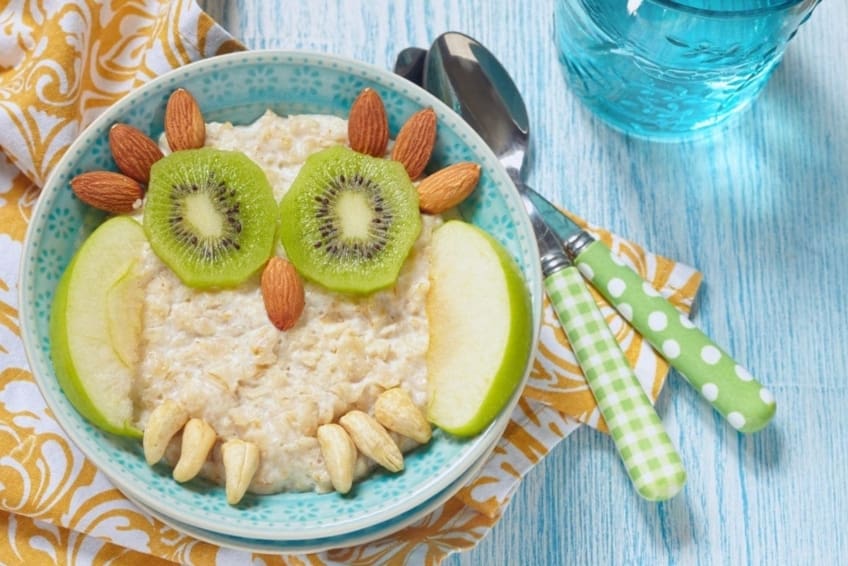
Many children and families today have busy schedules. These make it hard to sit down to homemade meals every day. Many kids’ diets involve a lot of convenience and takeout food. But these foods can be unhealthy. They can have a negative effect on your child’s health. Some of the problems unhealthy eating causes can continue into adulthood. They can even develop into lifelong diseases.
Healthful eating has many benefits for children. It can:
- Stabilize their energy
- Improve their minds
- Even out their moods
- Help them maintain a healthy weight
- Help prevent mental health conditions, including depression, anxiety, and ADHD
Plus, having a healthy diet and focusing on nutrition are some of the simplest and most important ways to prevent the onset of disease. Healthy eating can help prevent many chronic diseases. These include obesity, heart disease, high blood pressure, and type 2 diabetes.
Healthy eating habits are more likely to stay with you if you learn them as a child. That’s why it’s important that you teach your children good habits now. It will help them stick with these eating patterns. This will help them avoid developing chronic diseases like those listed above, as a child or as an adult.
Path to improved health
There are many ways you can teach and support your children in eating healthily. They include:
Start with breakfast
Eating a balanced breakfast with protein is a great way for your child to start their day. Protein can help them stay fuller longer. It even can help teenagers lose weight.
Mornings can be hectic. Try one of these for a healthy, on-the-go breakfast:
- Egg sandwich on whole-wheat bread
- Greek yogurt
- Peanut butter on whole-grain toast
- Hard boiled eggs, toast, and an apple
Make mealtimes a priority
Sitting down at the table as a family is an important part of establishing healthy eating habits. But it’s more than just eating together. Mealtimes are also a chance to:
- Provide your kids comfort. Children thrive on routine. Knowing they have dinner or other meals with their family regularly helps them feel safe.
- Talk with your kids. Show interest in what’s going on in their lives. Tell them what’s going on in yours. Build stronger connections among your family members.
- Monitor their eating habits. Older kids and teenagers spend more time eating at school or at friends’ houses. Use this time to watch what and how they eat. See if there is anything you can do to encourage better habits.
- Set an example for your child. If you prepare and eat healthy foods yourself, your child will eat healthier, too. Avoid obsessive calorie-counting. Don’t talk negatively about yourself. Your child could adopt the same attitude. This could lead them to develop body image issues or negative associations with food.
Get kids involved
Have your kids help you shop for groceries and choose foods to eat. Teach them how to read a food label so they know the nutrition in the foods they’re choosing. They can also help fix meals and take some ownership in what they’re eating.
Another fun way to involve your child is to plant a garden. Growing some of your favorite fruits, vegetables, and herbs can teach children valuable lessons. Planting, maintaining, and harvesting your own food is satisfying. It can be a fulfilling experience for children and adults alike.
Make small shifts to healthier foods
You don’t have to overhaul your entire meal plan. Find a few alternatives to unhealthy items in your fridge or pantry. Slowly start adding in more until you’ve adopted healthier food choices. Examples of easy swaps to make include:
| Instead of… | Try… |
| Whole milk | Low-fat milk |
| Soda | Water or flavored sparkling water |
| White bread | Whole wheat or whole grain bread |
| Ice cream | Homemade smoothie |
| Butter | Olive oil |
| Cream-based salad dressings or pasta sauce | Oil-based dressings or vegetable-based pasta sauce |
| Potato chips | Baked chips or nuts |
Limit sugar
Sugar occurs naturally in many foods. These include fruits, vegetables, grains, and dairy products. We get all the sugar we need from these foods.
Many foods have added sugar. At best, all this extra sugar just adds empty calories to our diets. At worst, it can contribute to hyperactivity, mood disorders, obesity, and type 2 diabetes.
Sugar is often added to foods we wouldn’t think had sugar in them. These include breads, canned soup or vegetables, condiments such as ketchup, frozen meals, and fast food. For the best health, we should avoid or reduce the amounts of these foods we eat.
Here are some tips for reducing the amount of sugar in your and your children’s diets.
- Don’t ban sweets. Saying your child can’t have doughnuts or cake ever again can create cravings. When they do have a sweet treat, they tend to overindulge. Just make these kinds of foods a special treat instead of a regular part of their diet.
- Modify recipes. Many recipes taste just as good with less sugar added. Try reducing the amount of added sugar by half and see how it comes out.
- Avoid sugary drinks. It is recommended that children should have no more than 12 grams of sugar a day (3 teaspoons). Yet 1 can of regular soda has 40 grams (10 teaspoons) of added sugar. Cutting out sodas and juices is an easy way to reduce sugar.
- Eat more fruit. Fruit has plenty of natural sugar. Eat more to satisfy your sugar cravings. Make desserts that are centered around fruit. Try a fruit smoothie instead of a milkshake.
Be smart about fat
Healthy fats are an important part of our diet. They help us get and stay full. They also benefit our brains, improving memory and lifting mood. The key is to make sure your kids are eating the right fats.
Healthy fats are unsaturated fats. These can be:
- Monounsaturated – olive oil, avocados, nuts (almonds or pecans), and seeds (pumpkin or sesame)
- Polyunsaturated – flaxseed, walnuts, or omega-3 fatty acids found in fish such as salmon or sardines
Unhealthy fats are trans fats. These can be found in:
- Vegetable shortening
- Margarine
- Fried foods
- Baked goods
- Processed foods made with “partially hydrogenated” vegetable oils
- Packaged foods such as crackers, cookies, or snack foods
Make fruits and veggies more appealing
The first step to making fruits and veggies appealing is to get rid of unhealthy sweet and salty snacks. Your child might want a salty snack, such as potato chips. But if there aren’t any in the house, they will be more likely to enjoy carrots with hummus.
After that, try some of these ideas:
- Keep fresh fruit on hand. Keep whole fruit out where your child can see it. Just a bowl with apples and bananas on the kitchen table serves as a reminder. Plus, whole fruit is an easy snack to grab on your way out the door. This is helpful with older children.
- Let kids choose. When you’re shopping, let your child pick what produce sounds good to them. They know what they are more likely to want to eat.
- Hide veggies in other food. Your child will never know they are eating vegetables if you hide them in other foods. Shredding them and adding them is an easy way to get them in. You can shred or grate veggies such as zucchini or carrots into stews, spaghetti sauce, meatloaf, or casseroles. Or you can bake them in muffins or breads.
- Use your imagination. To get your little ones to try more fruits and veggies, make it fun. Create a scene on their plate made up of produce. You can use broccoli for trees, cauliflower for clouds, and a slice of yellow squash for a sun. Be creative and make it appealing to them.
Things to consider
There are an unlimited number of tips available on how to get your child to eat nutritious food. Above all, the best way to help your child with nutrition is to encourage healthy habits.
- Be a role model. Kids eat the way you eat. Follow these tips yourself, and your child will be more likely to eat that way too.
- Start them young. Food preferences develop early in life. Expose your child to different kinds of food early on and continue as they grow older.
- Focus on overall diet. Instead of focusing on specific foods, focus on eating patterns. Provide as many whole, minimally-processed foods as you can. Avoid packaged and processed food when you can.
- Know what they should be eating. Much of the focus is placed on what we should avoid. This can lead to feeling deprived. Instead, focus on what you and your child should be eating. This keeps eating healthy as a positive action.
- Don’t force them to eat. Don’t make your child “clean their plate.” They need to learn to listen to their bodies. When they feel full and are allowed to stop eating, they are less likely to overeat.
- Skip the food reward. When you use food as a reward or to show affection, your child could start using food to cope with their emotions. Instead, give them hugs, praise, attention, or time together.
- Put limits on screen time. When you put limits on TV, computer, or video game time, your child will tend to find something more active to do. Also, snacking while watching TV leads to mindless eating, and your child will take in more calories than they should.
- Set snack boundaries. Teach your child to ask before having a snack. Have them sit at the table to eat the snack, not in front of the TV. Put snacks like pretzels or popcorn on a plate or in a bowl; don’t let your child eat directly out from the bag.
Questions to ask your doctor
- Do you recommend a vegetarian or vegan diet for my child?
- Are carbohydrates bad for my child? What about refined carbs?
- Does my child need to be on a gluten-free diet?
- Are soy-based products better than dairy products?
- How can I get my child to eat more vegetables?
- Should I see a nutritionist or dietician to help me develop better habits for my child?
Resources:
USDA, Nutrition.gov: Food and Nutrition
![]()
Copyright © American Academy of Family Physicians
This information provides a general overview and may not apply to everyone. Talk to your family doctor to find out if this information applies to you and to get more information on this subject.







